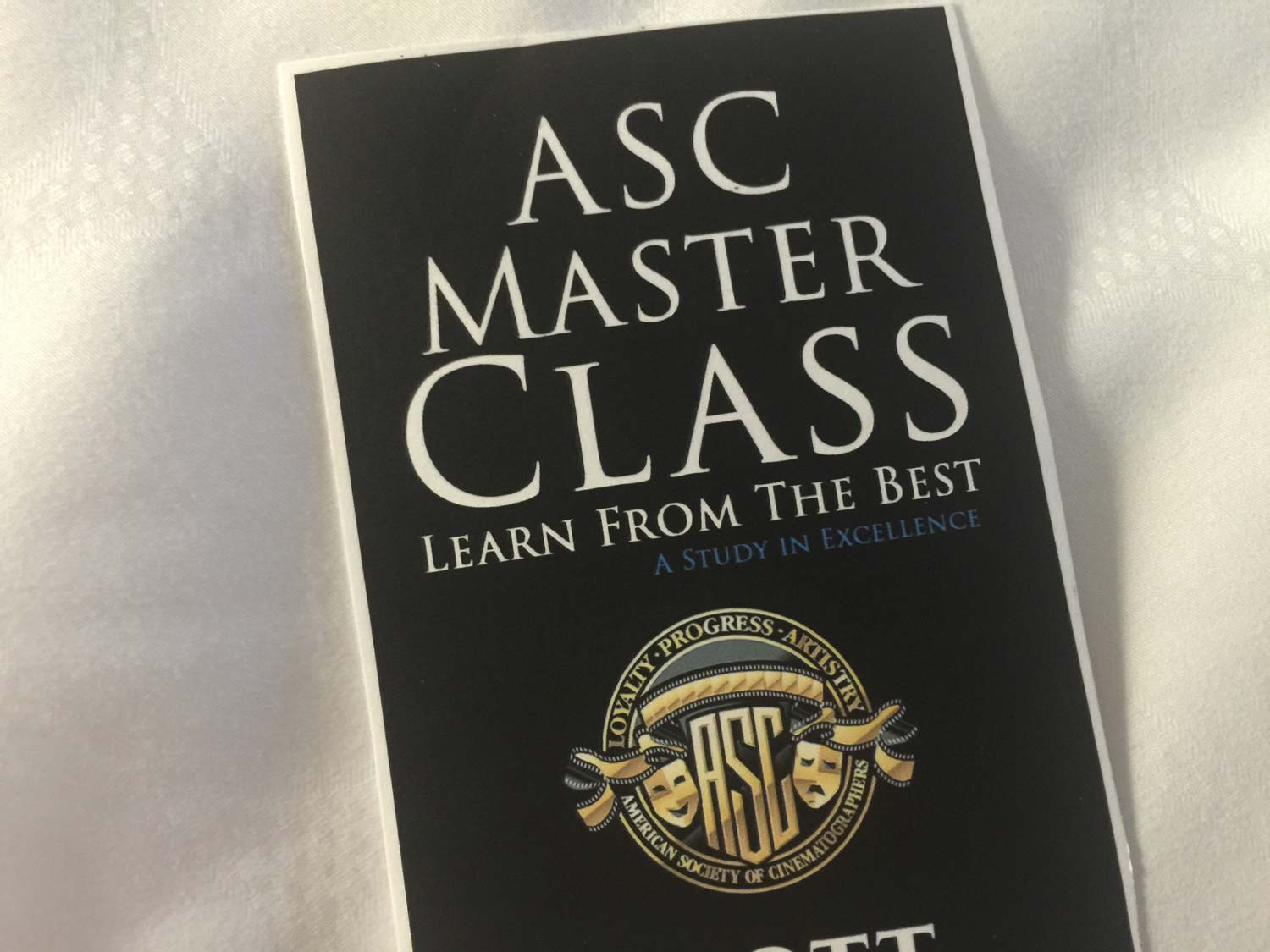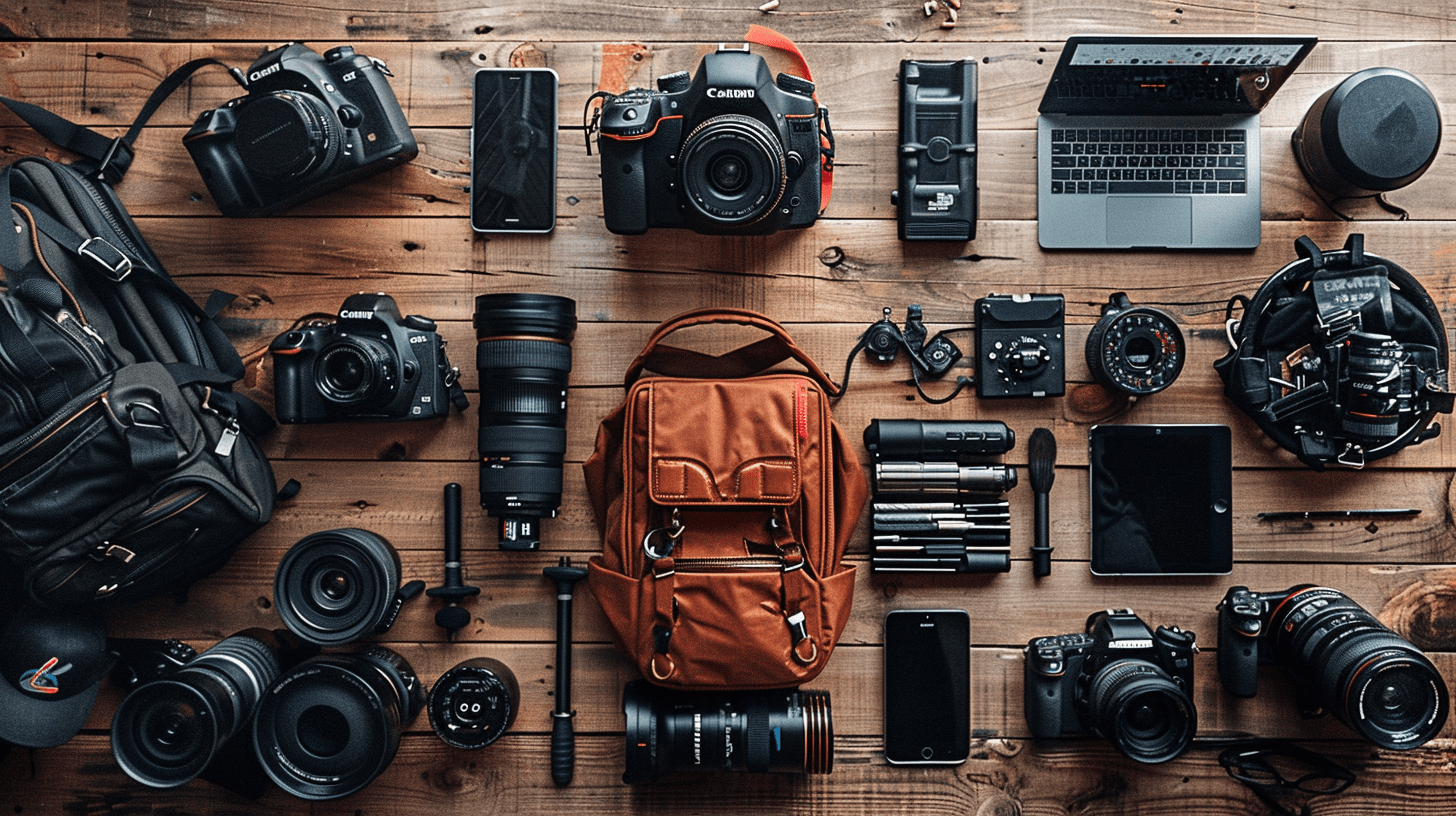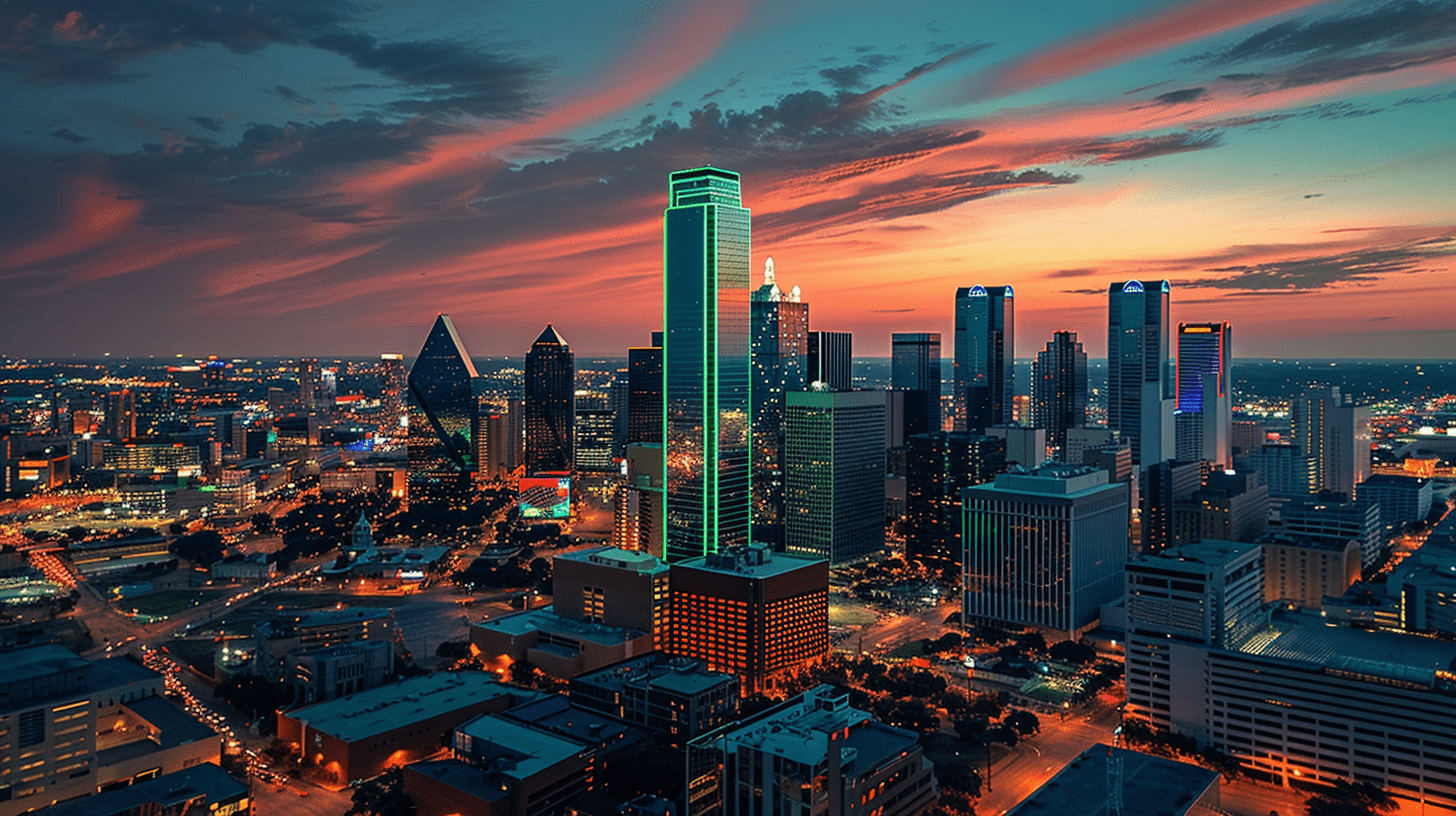ASC Masterclass – Day 4
Day 4 was the best day yet. However this perspective was pretty unique. It was philosophical reinforcement for me. Guillermo Navarro ASC – Film Making Philosophy Today at the American...

Day 4 was the best day yet. However this perspective was pretty unique. It was philosophical reinforcement for me.
Guillermo Navarro ASC – Film Making Philosophy
Today at the American Society of Cinematographers Master’s Class, we worked with Guillermo Navarro ASC, all day long. The same guy that made Hellboy, Pan’s Labyrinth, Pacific Rim and most of the really awesome movies that Guillermo Del Toro made. Yeah. He is a pretty big deal in the film making world.

So a really good change of events today as it was less technical and for more philosophical. I was waiting for the time to actually occur when the artistic philosophy really came out and it happened. I’m glad it did today too. It wasn’t a conversation about the theory or technical knowledge. It really was philosophical in nature. Some of the other people in the class didn’t really appreciate today is much as I did. In fact it was probably their least exciting day of the whole week. However, for me I found it fascinating and even more so, reassuring.
Any lens a good lens, learn to light. Find the film language and drive it home.
Guillermo’s big piece of advice was that filmmaking isn’t about being technical, it’s not about camera technology, not having the right lens, it’s all about speaking the filmmaking language. Many people in the class found this frustrating as there is a desire for technical knowledge and the idea of “what do I need to do to make movies like you”. In fact it’s the exact same thing as some of our earlier articles about finding a design language and speaking it all the way through from beginning to end. This is really the foundation of making good design choices. And this was super encouraging to hear. Thanks to architecture school for that one! Maybe that degree gave me more than I thought.
To give you an overview of what happened today, we spent a little bit of time watching his movies and he would talk about the way he didn’t use CG and the perfection of the camera movement. Then, we spent some time looking at this nifty little crane he had that he called “la Puchin'”.
Here’s some nuggets that I got from Guillermo today:
- First you have to have an idea and then work it.
- Don’t be overpowered by technology and technique.
- Don’t let the tech drive the product.
- You have to protect your work.
- No one advertises movies bye hey watch this movie it was on schedule and on budget. They care about the story. Make your decisions based on the story. I love that one.
- Find the film language that helps you tell the story. It’s all about your style and your desire.
- You have to have a strong group of collaborators.
- Cinematography is language it has a set of rules and many opportunities for expression. But you have to know how to speak the language.
- You are not at the service of the tools. No matter what your camera is, it must be all the same film language.
- The thing that will give you a career will be the ability to find the language The story needs.
- Commercial work is not your creative project it’s a very specific look the people that own the product are after. You you have to know how to give them the look there looking for.
- The authority comes from your knowledge.
- Your efficiency in set ups allows for more performances per day which is really what makes the difference for the actors and the directors, and ultimately the movie.
- Producers think that your prep work is for picking out gear.
- If you lose track of your own process and how much are able to imagine and your knowledge it can be really bad.
- You have to be ready to jump on the train when he comes by.
- Egos get everybody in trouble.
- Any lens a good lens, learn to light, don’t let technology Drive the picture. The camera is a tool.
- The protection of the integrity of the vision is very important.
- Find one language and Drive it home.
- The problem with digital as it offers too many options. So you end up having too many cooks in the kitchen. This is bad. Now the colorist thinks he and his vision are important. The cinematographer must fight for the control of the picture.
See how many times the idea of language came up? Its really great and really reiterates the fact that the vision must be strong.
Here’s some of Guillermo’s notes about Hellboy 2
Guillermo never storyboards anything. He just has the main concept for the film that he works out with the director Guillermo del Toro and they just do it. They work to get to the point where they speak the same design language and then they do it. Often times he said the best way to do it is to actually see the action being done on set and react accordingly. He said the problem was storyboard to sometimes once you see something you can’t unsee it. So story boards that are made by someone who is not the director or the cinematographer are useless. The scene in Hellboy to where the milky white price ends up killing the king, is 100% on location! In a museum! No CG! No green screen! It was all done in camera! Holy crap! Seriously!

He said the camera that is in the right place and equip correctly for what he wants to do becomes the A camera, even if its got the C camera operator on it. Get as many cameras as you can in the budget and equip them accordingly. Let them be dedicated cameras. Of course, this only works when you have a big budget, but the advice is basically to make the logical and quickest decision. Don’t get caught up in the politics. After the Hellboy 2 screening, he pulled out this little device called “La Puchin”, which is basically a language barrier name for “push in”, since overtime they would ask for in Spanish, “get the little crane here to do “the push in”. They used it so much it was named by the crew “La Puchin”. It’s just little Crane you can see in the pictures below.
Once you see something you can’t unsee it. If you’re storyboards are made by someone who isn’t a part of the creative process, they are useless and dangerous.
We spent the rest of the day messing with this little contraption. He said Guillermo del Toro’s real mastery is in his ability to use the tools to reveal visuals in the film that are essential to the story. So what would have taken 18 set ups he can now turn into one by revealing multiple elements into one shot. “This is true cinematography” and “very strong directing”. This is the film language.
One good tech tip and lighting tip that he gave was a technique where he used a silver reflector at a 45 degree angle above the actors with a “Source 4” light reflected off it. A Source 4 light is a theatrical stage light you would use to direct light in a beam. Similar to a gobo light. This is a fabulous technique since essentially you can now place a light source at any place on set and have the lamp behind the camera reflecting the source where you want. See the picture below. Even better if you use a very long bounce source. A few of the guys from the class said they’d seen that technique and they named the person they had seen it from. Guillermo quickly said, “Yes , I know Richard, and so-and-so got that from me”. Go figure.




Source 4 bounce into reflector and then to actor
In the end we watched the final scenes of Pan’s Labyrinth. He said many people think of that movie was really heavily CG. But apparently, the majority of it really is in camera. The special effects were very minimal. They have elaborate costumes and beautiful sets though! Even the flames and the explosions aren’t flames and explosions but yellow lights on a flicker with dust charges and smoke in front of them. He said he couldn’t actually use fire because the Spanish government wouldn’t allow for it because the summer had been extra dry. He mentioned that the scene in the Pans Labyrinth where the little girl runs into the “white man”, the really creepy skinny white thing with eyeballs and his hands, “NOW THATS A SEQUENCE!”. You can tell that Guillermo is very proud of the work in Pan’s Labyrinth, and rightfully so. I asked him about it and he said that was probably one of his most proud pieces of work, because he loves the visuals, and also because he has a strong attachment to Spain.
Tech tip of the day: There’s an app called TESSIVE which allows you to shoot at 120 frames per second and then go back and choose the shutter angle in post. If you know what the importance of that is, you will probably seriously consider the app.
Tech tip 2: high stage key light and then fill. That’s the film look. – Don McCuaig.
I can’t believe already been here for four days, it feels like we just got here. This is been a wonderful class if you want to find information about signing up for this class, check out this link here. If you can get accepted, I would suggest it. They let me in, so its not that difficult. I would even think about coming back again, considering that there are different members of the ASC the teach this class every time. We’ll see what tomorrow holds it should be very interesting. Considering many different ASC member should be in town, including possibly Emmanuel Lubezki. More tomorrow.


